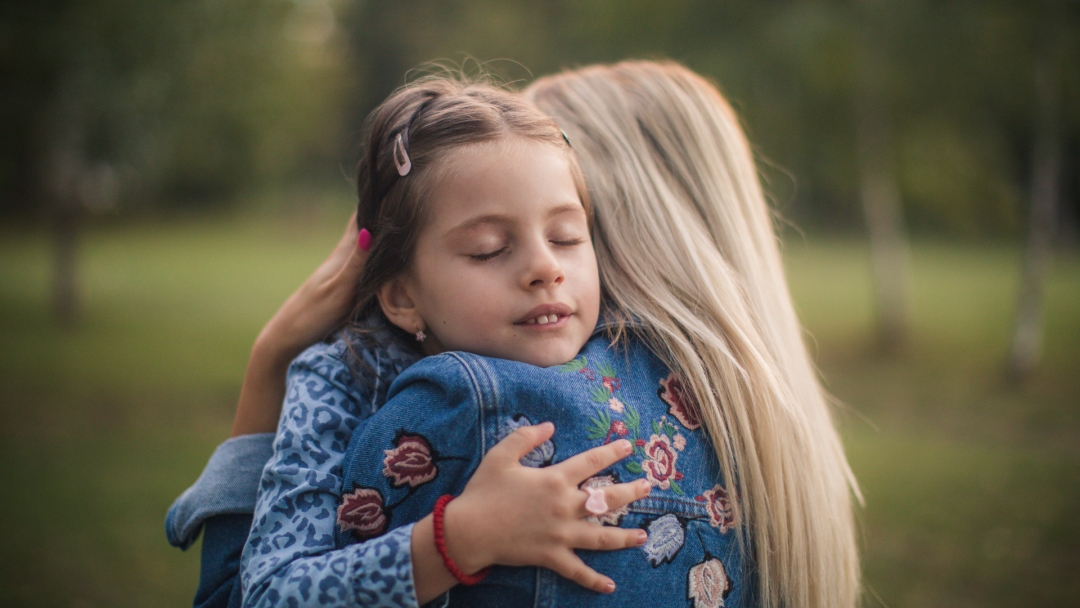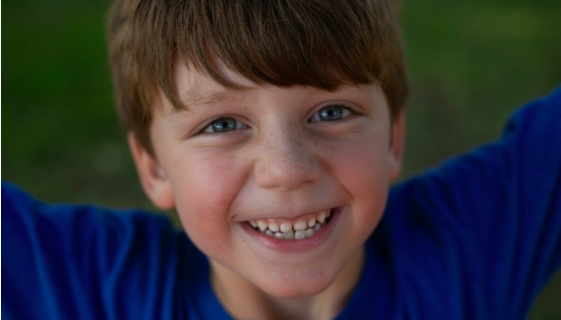‘Name it to tame it’: How I helped my child’s brain integrate so they’re more flexible, adaptive and stable
Categories: General Parenting
When my first child was born, I made some mistakes, as we all do.
None of them came from anything other than me just trying to do what came naturally or what I thought was right at that time. I’ve forgiven myself, because those mistakes are inevitable for everyone and that’s how the learning occurs. But, I’ve also realised that a lot of my mistakes happened because I had no idea how much power I had in that relationship with my child.
When my eldest girl came along, fourteen years ago, I was so hyper-aware of my responsibilities in keeping her safe. When she fell, I had to train myself to not gasp and rush to comfort her every time it happened, even though that’s what I instinctively wanted to do. If I did rush to her, she would get upset. She would cry or scream or do that little bottom lip-tremble that made it look like she felt betrayed by the very ground under her feet. Essentially, if I communicated that what happened was upsetting, she got upset. That’s what I mean by power.
Now, it’s not that those feelings weren’t real, it’s that she only accessed the feelings I suggested she should. If it wasn’t a bad fall and she wasn’t hurt, there were other responses available to her, like getting up off her little nappy-bulky butt and moving on with her important toddler business. But no, she gave an Oscar-worthy performance of pain and suffering because my body language, tone of voice, actions and response told her she should do so.
In the book The Whole Brain Child: 12 Revolutionary strategies to nurture your child’s developing mind, by Daniel Siegel and Tina Payne Bryson, they talk a lot about brain integration. There are a whole bunch of different parts of the brain that are responsible for different things, and brain integration is when the parts are unified and working effectively together as a whole (hence the book’s title). When the brain is more integrated, we feel more flexible, adaptive and coherent (acting in ways that make sense), energised and stable. Make sense? Yep. Understanding this stuff will actually rock your world, we guarantee it. We’ve recently made some ParentTV videos with Tina Payne Bryson herself (cue my total fangirl moment!) and she talks about the very thing I was experiencing with my daughter: the power we have to help our children frame their experiences.
The ‘Name it to tame it’ parenting strategy explained
Tina Payne Bryson and Dan Siegel first wrote about this strategy in The Whole Brain Child, but honestly, I reckon it’s worthy of a whole book all to itself. ‘The idea of “Name it to tame it” is based on the science that when we actually accurately name what we’re feeling (or what we’re seeing others feeling), it actually helps integrate the brain,’ says Dr Payne Bryson.
‘The left side of our brain is in charge of our words, putting things in order and explaining things, and the right side is in charge of pulling it all together, the meaning and feel of an experience. So, when we have something happen and we name it and tell a story about what is happening, it helps take the words, logic and explanation from the left side of our brain, and the images, emotions and bodily sensations from the right side, and bring them together. This makes the brain more integrated.’
DR TINA PAYNE BRYSON, AUTHOR AND PSYCHOTHERAPIST
What does ‘Name it to tame it’ look like?
When we try to gloss over or distract our kids from their feelings, we minimise them, says Dr Payne Bryson. Minimising their feelings not only doesn’t change them, it also teaches them that we don’t really get it or aren’t interested in what they’re experiencing. Conversely, ‘Name it to tame it’ is about acknowledging and naming the facts, acknowledging and naming the feelings, then coming up with a strategy or message of resilience as a response.
- Name the facts (what is happening?)
- Name the feelings (what does it feel like?)
- Help them decide how to navigate the feelings (responding with resilience).
This works particularly well when your child’s experiencing uncertainty about something and maybe feeling conflicted about it, too. When you use this approach, you help them to first identify what is known, which helps to clarify what is truth and what is an assumption, unfounded belief or supposition. Ask questions like, ‘What do we actually know?’
Then, you help them pin down how they’re feeling about the different possibilities of what may happen. Ask questions like, ‘When you think about x happening, how do you feel?’ That way they can recognise what the feelings are and name them. You can help by reflecting the feelings back to them and suggesting what they might be called. It’s important that these are just suggestions, so your child can refute them if they’re not entirely right. Ask questions like, ‘I wonder if you’re feeling anxious about x happening?’
Here’s the best part: When the feelings are accurately named in the left side of the brain, it will send calming neurotransmitters down to the right limbic area where the feelings are experienced. That’s a simplistic explanation of a lot of complex science, but you get the picture! Naming the feeling literally helps to tame the feeling.
Then, you can help your child come up with a response for what to do when they feel whatever the feeling is. ‘For example, if they’re feeling anxious, you might suggest breathing exercises, singing or humming to regulate the nervous system, putting a temporary tattoo on their hand of an animal that makes them feel brave, or anything else that you think of,’ says Dr Payne Bryson. We’ve linked a few videos below from psychologist Dr Charlotte Reznick and Allison Davies, Music Therapist and Brain Care Specialist, below. Allison’s all over humming for regulation, and Dr Reznick has some great ideas about breathing, mindfulness and meditation for kids.
As parents, we have the ability to help our kids make meaning out of their experiences. We have the power to help them learn emotional literacy and build strategies to cope with uncertainty and upset. While they may no longer look to us to find out whether or not they should be upset about falling over, they probably still need our help to know how it is they feel and what they can do about it. That’s the power and privilege of parenting!






